The United States boasts some of the most majestic and expansive rivers in the world. Throughout the country’s storied history, American communities have built around and relied upon these flowing bodies of water, which provide countless individuals with sustenance, recreation, and other life necessities.
Though the exact lengths of each river may vary ever so slightly depending on the source, these geological features are undoubtedly among the U.S.'s grandest natural landmarks. Here are the longest American rivers, and how adventurous travelers can explore these waterways for themselves.
Arkansas River - 1,460 miles
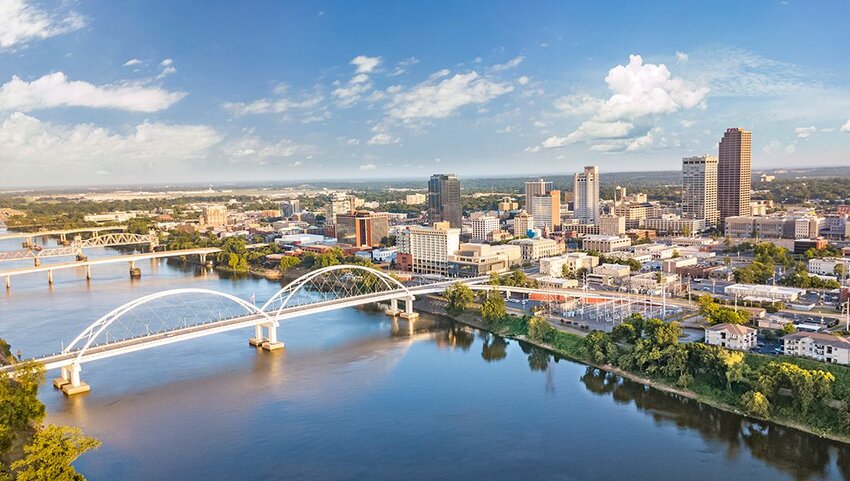
Forming high in the Rocky Mountains near Leadville, Colorado, the Arkansas River continues on through Kansas and Oklahoma before meeting the Mississippi River along the eastern border of Arkansas. All told, the Arkansas River is 1,460 miles long, a total distance just 10 miles longer than the Colorado River, the latter of which cuts through the Grand Canyon.
After flowing through several small Colorado towns throughout the Rocky Mountains, the Arkansas River comes to the metropolis of Pueblo. The Pueblo River Trail System was established by the city to provide residents with recreational opportunities along both sides of the Arkansas River. The river continues into Kansas where it ultimately reaches the city of Wichita. In Wichita, travelers can experience Riverfest each summer, which is Kansas’s biggest outdoor event. The celebration features live music, Arkansas Riverside marathons, and a local golf tournament. If you can’t make it to Wichita in June, consider visiting Tulsa, Oklahoma, where the Great Raft Race occurs each Labor Day weekend. The race once reached a peak of featuring 600 rafts and welcoming 150,000 spectators, making it the largest single day event in Oklahoma state history at one time. Finally, the Arkansas River flows through its namesake state including towns such as Pine Bluff and Little Rock. Nicknamed “The Natural State,” Arkansas features many state parks where you can sail down its eponymous river and even perhaps see a bald eagle soaring high above.
Rio Grande River - 1,900 miles
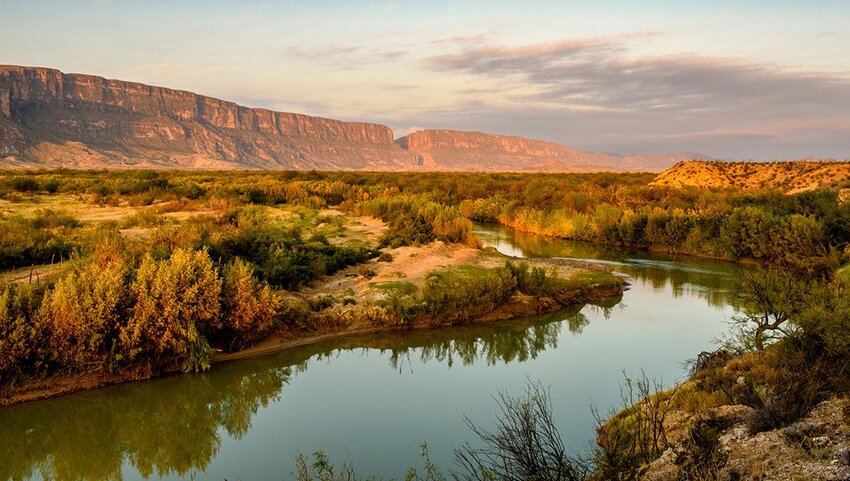
The Rio Grande River forms the entire border between Texas and Mexico, before traveling up through New Mexico and finally reaching one of its end points in southern Colorado. All told, the Rio Grande extends for a distance of 1,900 miles, making it the 20th longest river worldwide in addition to being one of America’s longest. Portions of the river even rise to an altitude of 12,000 feet, where snow-fed mountain streams flow down to the desert regions below.
At one end of the river lies the Gulf of Mexico, and just to the right of that is Brownsville, Texas. Brownsville is home to Laguna Atascosa, the largest protected natural habitat in the Rio Grande Valley, as well as sites such as the Palo Alto Battlefield Historical Park. As the river continues along the U.S.-Mexican border it finally comes to El Paso, where a 10.5-mile-long riverfront trail combines the serenity of the flowing waters with views of the stunning peaks of the nearby Franklin Mountains. The Rio Grande then rises through New Mexico, passing through the eastern side of Albuquerque. If you’re an animal lover, Albuquerque is a popular spot to witness incredible fauna such as bald eagles and great blue herons that call the river area their home. The Rio Grande finally reaches its terminus amid the San Juan Mountains of Colorado near the town of Alamosa. Here, activities include typical outdoorsy exploits including fishing, camping, and even whitewater rafting, which is particularly popular during the warmer months.
Yukon River - 1,980 miles
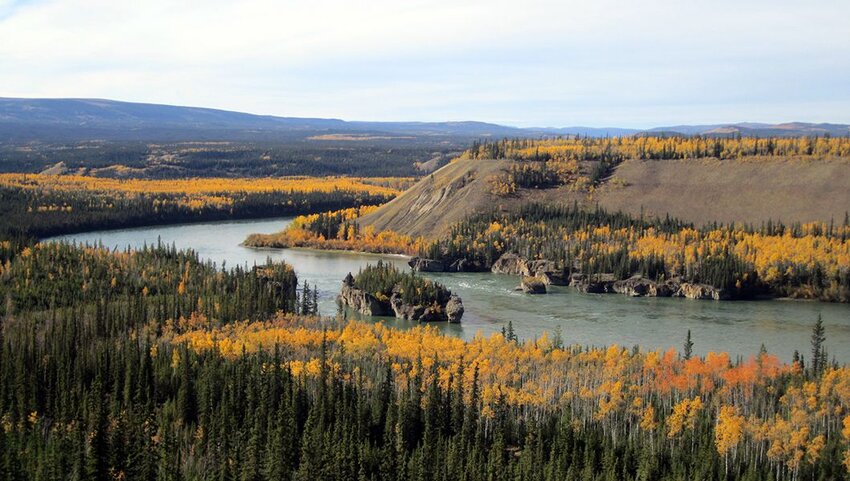
The Yukon River is the longest American river that shares its waters with another nation. The river begins in northwest British Columbia, a Canadian province, before flowing through Canada’s Yukon into the U.S. state of Alaska. Of the Yukon River’s total 1,980 miles of length, 731 of those miles are located within Canada, with the remaining 1,249 miles located entirely within Alaska.
Given its place in the Alaskan wilderness, the Yukon River is among the more difficult bodies of water for travelers to experience. The trip is well worth the effort, however, as the region boasts some of the most majestic natural terrain anywhere in the country. One of the most appealing activities is to simply float down the Yukon River in a kayak or small boat, where the lack of cars and buildings allows for the unmitigated enjoyment of the serene and awe-inducing surroundings. Some notable human-made sites are found in the Yukon-Charley Rivers National Preserve, where you can explore historic cabins including Frank Slaven’s Roadhouse — a former rest stop for miners dating to 1905 that is included on the National Register of Historic Places. As the Yukon River nears its delta in the Bering Sea, visitors can explore the natural wonder of the Yukon Delta National Wildlife Refuge, home to one of the world’s largest protected populations of water birds.
Mississippi River - 2,340 miles
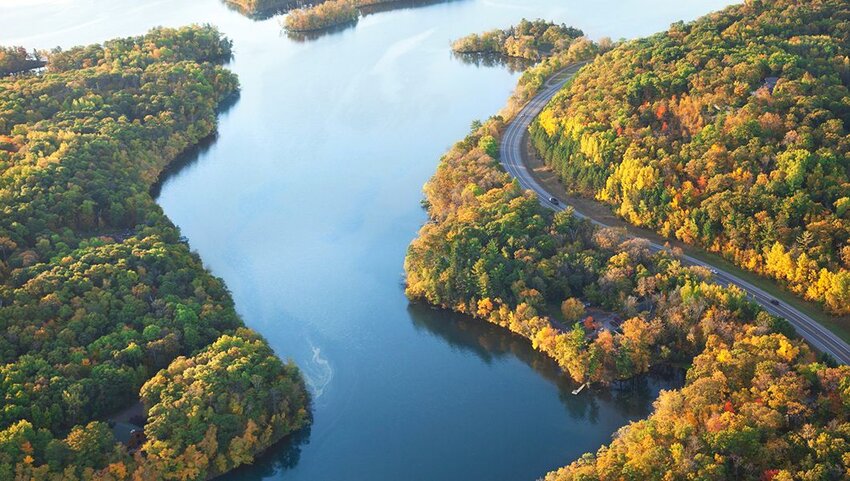
Stretching from Minnesota all the way down to the Gulf of Mexico, the mighty Mississippi River flows for 2,340 miles through the American heartland. Along the way, the Mississippi flows along the state borders of Wisconsin, Iowa, Illinois, Missouri, Kentucky, Tennessee, Arkansas, and Mississippi before cutting through Louisiana on the way to its delta. The Mississippi is so expansive, connecting with a large number of tributaries, that it drains into 31 U.S. states and even two Canadian provinces.
Beginning in Minnesota, the river flows out of the great Itasca Lake before passing by notable landmarks including the boyhood home of aviator Charles Lindbergh. As the Mississippi moves into Wisconsin, travelers can take in natural sites including the Genoa National Fish Hatchery and historic buildings such as Fort Crawford. Next up is Iowa, which is home to the National Mississippi River Museum & Aquarium, featuring exhibits that chronicle the river’s history as well as the live animals that make their homes in the river's waters. The Mississippi then passes through Illinois through the Black Hawk State Historic Site, a location that encapsulates the legacy and culture of local Native American tribes. Later the Mississippi flows into Missouri and passes by the boyhood home of Mark Twain, whose writings were heavily influenced by the Mississippi River. The waterway briefly continues through small portions of Kentucky and Tennessee before coming to Arkansas, where the Delta Gateway Museum is a great place to learn about the river’s impact on regional agriculture. The waterway later passes by Mississippi’s Delta Blues Museum, before cutting through Louisiana and finally reaching its end flowing into the Gulf of Mexico.
Missouri River - 2,540 miles
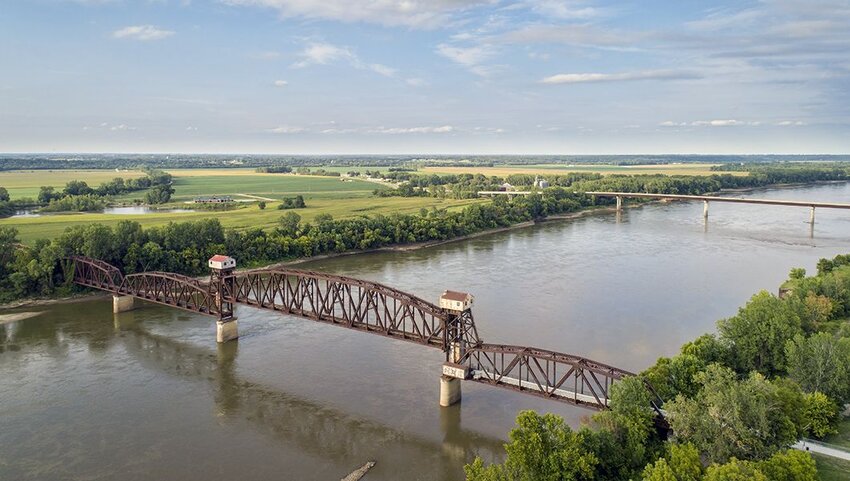
Though it may not hold the same name recognition as the Mississippi, the Missouri River is the longest river in the United States, measuring 2,540 miles by some estimates. Originating in western Montana in an area known as the Red Rock River, the Missouri continues on through the Dakotas, later forming boundaries along states such as Iowa, Nebraska, Kansas, and Missouri. The Missouri River finally culminates in St. Louis, where the waterway forms a confluence with the Mississippi River.
One of the first major stops along the Missouri River is Great Falls, Montana, where travelers can stroll along the city’s River’s Edge Trail. On the cultural side, the city is also the site of the Charles M. Russell Museum, one of the most prolific painters of scenes depicting the American West. Continuing on, the Missouri travels through Bismarck, North Dakota, where visitors can board a riverboat tour that travels the same waters that were charted by legendary explorers Lewis and Clark. The Missouri River then ventures into South Dakota, where it crosses through lands belonging to five historic Native American tribes. Upon arriving in Kansas City, the Missouri River is bordered by a bustling River Market to one side and the Arabia Steamboat Museum on the other, where guests can learn about historic vessels and sunken treasure dating to 1856. Last but not least, the river cuts through its namesake state and culminates in the city of St. Louis. Here, travelers can visit the Jones-Confluence Point State Park, marking the meeting point of the Missouri and Mississippi Rivers where Lewis and Clark began their exploration of the Louisiana Purchase in 1804.





